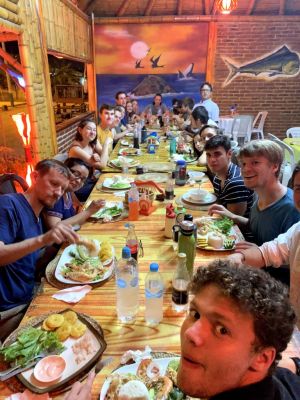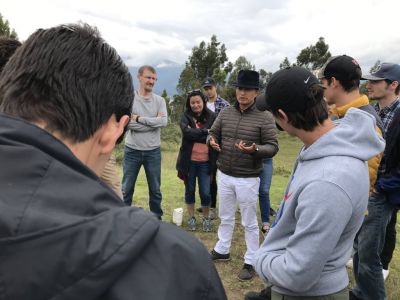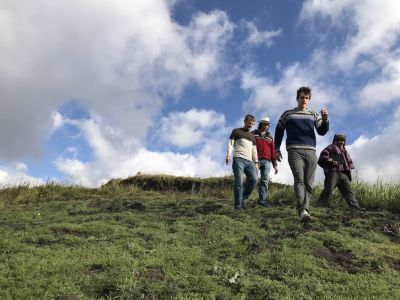On Monday, we visited two habitat sites. In the morning we went to the Bight where each research group did a Thalassia sweep to collect nudibranchs. Nudibranchs are shell-less snails with brilliant colors and extravagant dorsal structures called cerata. As we pulled the anchor into the boat to leave, we were surprised by two dolphins! Everyone was excited to see them in our “backyard.” In the afternoon, we visited the rocky shore at Anne’s Beach. We were interested in observing chiton, barnacles, and gastropods that have adapted to life in the intertidal zone. The Fiddler Crabs scurrying around the beach were pretty entertaining too. We are constantly amazed by the vast diversity of life in every square inch surrounding us.
Tuesday was rainy and windy. We spent the day indoors which gave students an opportunity to create and write a research proposal. Students were encouraged to put together their observations from the field with the marine ecology concepts from class as they formulated their research questions. Project proposals were presented in the evening and a wide diversity of interesting ideas were finalized. This year’s projects:
Effects of Cassiopea xamachana on Species Richness and Faunal Densities in Seagrass beds – Isaiah, Crys, and Jacob P.
Effect of Boat Scars on Nekton Foraging Behavior – Jacob R., Bekah, and Tae
Sponge Re-growth in Mangrove channels – Caleb, Dan, and Nate
Analysis of Pore Size Variation and Macroorganism Density in Porifera – Melanie, Ben, and Laura
The Relationship between Mangrove trees and Fiddler Crabs – Jacob S, Andrew, and Jaime
Microhabitat Analysis of Nudibranch density and richness in Thalassia, Halimeda, and Penicillus – Michael, Kate, and Derek
Tomorrow we are back in the field!
– Jody for the team







